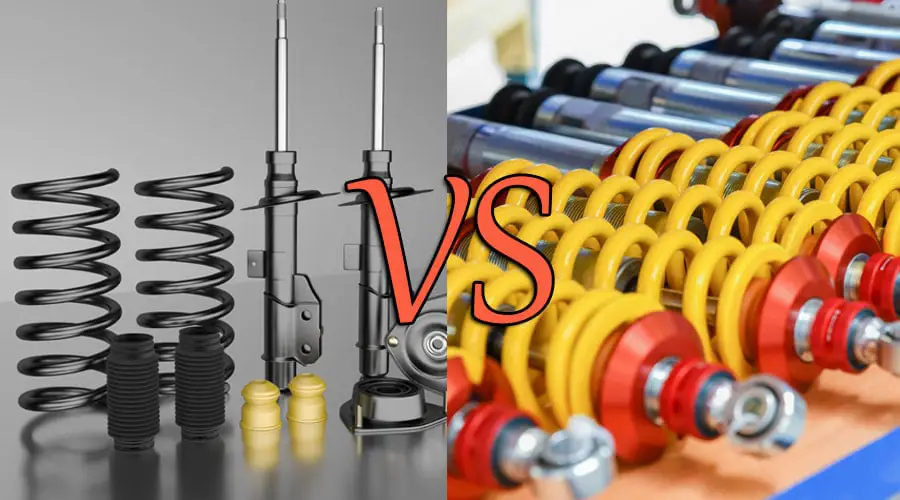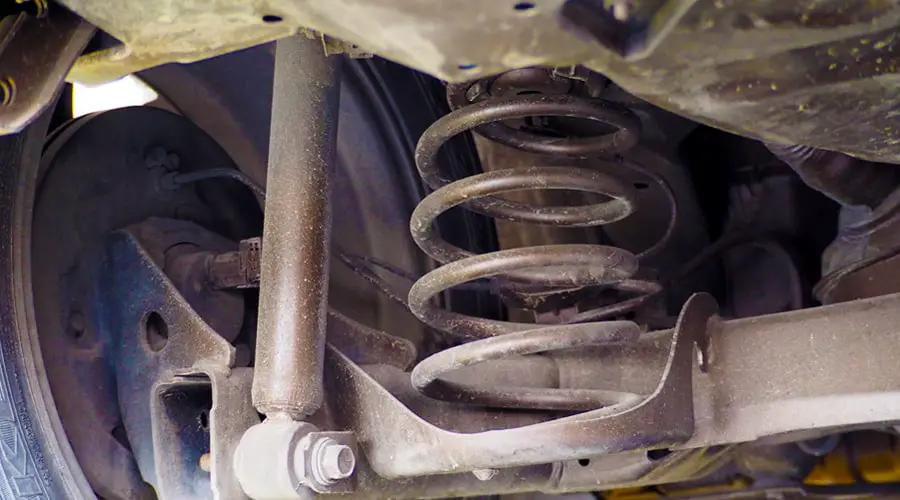
Most people don’t know the difference between a shock and strut and use the words interchangeably; however, they are actually two very different parts. Both are integral to having a smooth ride. They dampen any jarring movement of the spring and make sure the vehicle does not oscillate or jump. A car cannot have both a strut and a shock on a wheel, it has one or the other. There may be times when there are struts on the front and shocks on the back but never both on one wheel. Vehicles are designed for one or the other and the parts are not interchangeable.
The main difference between shocks and struts is that a strut is part of your vehicle’s suspension system. A shock is not. Let’s take a closer look.
Shocks
Shocks are part of your vehicle’s suspension and help to control the force and rebound motion of your vehicle’s suspension system and springs. Shocks make sure that the tires are always touching the ground. Their main task is to absorb energy for the bumps and ruts on your travels. If you did not have shocks, your vehicle would bounce constantly, driving would cause a lot of vibration, and steering would have clunking sounds.
A shock absorber is made up of a piston, coil, and hydraulic fluid. From the time that your tire first hits a pothole or concave dent in the road, the shock starts what is called a cycle of compression. The piston puts pressure on the hydraulic fluid that is in the top part of the shock. The fluid’s purpose is to reduce the speed of the coil returning to its original place, thus reducing the impact and bumpy feel of your ride. The shocks make the drive smooth and reduce the discomfort from bumps.
You could drive without shocks but it is not recommended and would make the drive extremely uncomfortable.
Struts
A strut is another part of the suspension and steering systems. It is a pivot point for the steering and has a coil spring. They are almost always used at the front of any vehicle with front-wheel drive and combine many different suspension pieces into a small assembly. This assembly includes:
- Coil spring
- Spring seats
- Bearing
- Steering Knuckle
The coil spring supports the burden of the vehicle and makes sure it rides smoothly when there are irregularities on the road. You won’t feel the bumps and dips as much as if you didn’t have struts. The struts link the bearing to a ball joint, allowing the whole assembly to turn when the vehicle moves in a particular direction.

Source: canva.com
A strut absorbs the spring movement when it constricts and rebounds as well as helping to support the weight of the vehicle while it is motion, allowing it to adapt as needed to any irregularities in the road. Shocks absorb impact as struts do but struts also support the burden of the car and help control things when it’s in motion.
Because struts can affect alignment, you always need to align the vehicle when you replace a strut. Struts also tend to cost more than shocks because they are a more complicated part.
Replacing Shocks or Struts
As with any part of your vehicle, the shocks and struts need to be maintained. Watch them for signs that it is time to be replaced. While your car can run without shocks (which is not advised) you don’t want to be without struts due to the integral part they play in the suspension and steering. Here are some things to watch for:
Signs you can see:
- Fluid leaks and marks
- Damage or significant dents
- Tires begin to show abnormal wear patterns
- The vehicle is no longer handling smoothly.
This means you are suddenly experiencing a shaky drive or the steering is not as responsive as it should be. You might feel the steering is stiff or hear it making noise. You may also experience instability when you use the brakes. - Watch your mileage. Once you hit 50K, the struts or shocks may go bad. This varies depending on your driving conditions and the vehicle make and model.
It is important to maintain the shock and struts because if they are in a poor condition, your tire wear accelerates. It can also affect the other suspension parts of your suspension, such as the:
- ball joint
- linkage spring
- CV joints
Not taking care of your shocks and struts means you could end up paying a lot more for repair and maintenance of other parts beyond simply having to just replace a strut or shock.
Final Thoughts
While everyone likes to get a good deal on parts, make sure you don’t cut corners when you buy new shocks or struts. Know the difference between shock vs strut so you know what to ask for when you buy parts. They are an essential part of your vehicle and you want them to be reliable and long-lasting. Your vehicle needs to handle well, corner as needed, and maintain a safe drive.
Purchasing inexpensive parts means they are probably not going to last for a long time and can cause damage to the suspension and steering systems if they give out before expected. You don’t necessarily have to buy high end parts but choose wisely so you don’t end up paying more for other repairs and maintenance down the line due to poor quality struts or shocks. You can do the work yourself if you have the proper tools and ability or you can take your vehicle to a professional. Make sure to have it done right so you have a safe and drivable car.